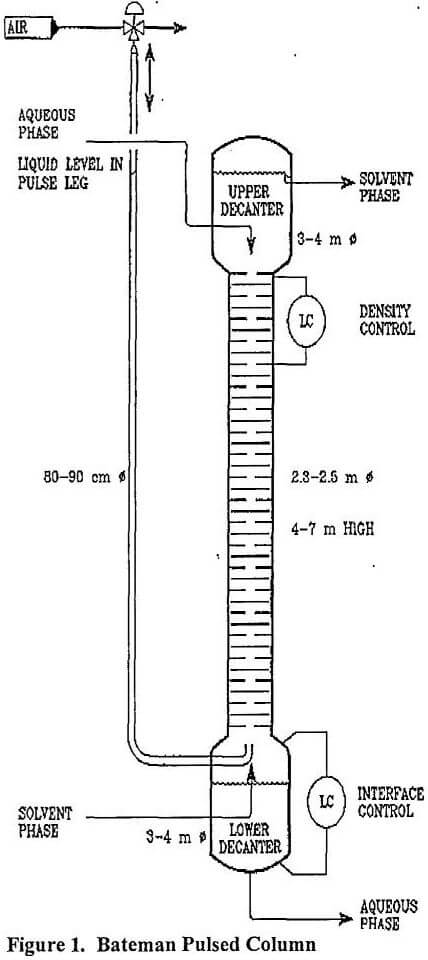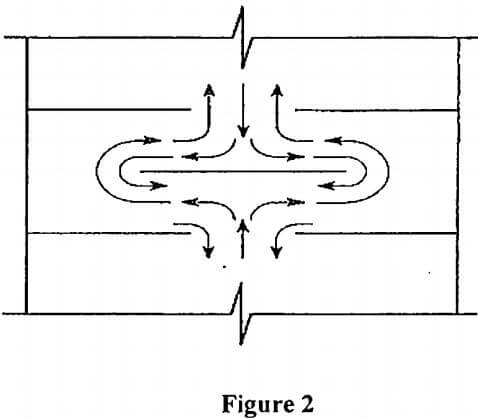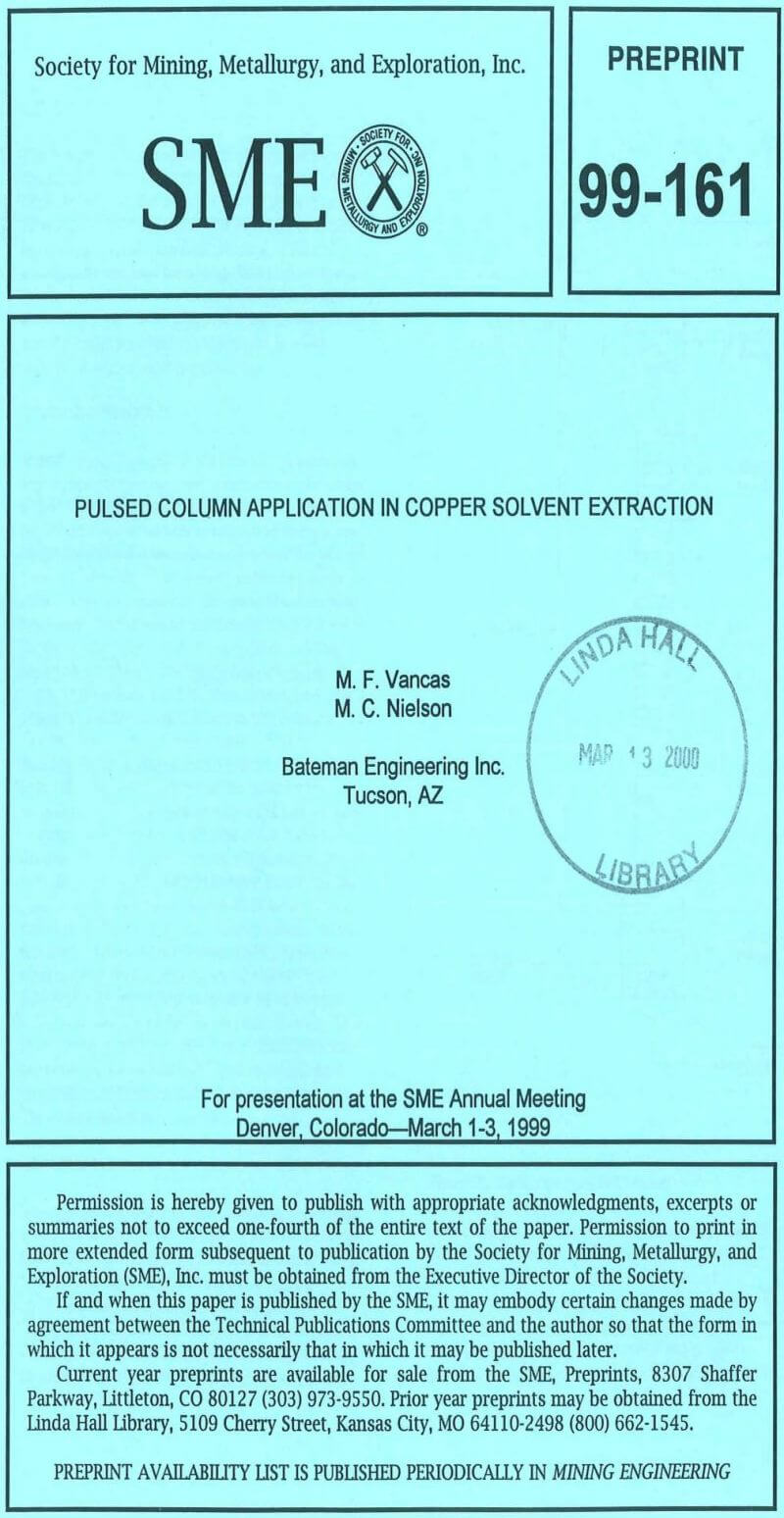
Pulsed columns, like other pulsed columns, consist of an active column section with decanters on either end. Test columns are usually in the 40 mm to 150 mm diameter range and the decanters are typically twice the diameter of the column. Commercial columns can be up to 3 m in diameter with 6 meter diameter decanters. The height of the columns will depend on the kinetics of the liquids used in the process but for test columns is typically 2 m to 10 m. Commercial columns can be 35 m tall. When the decanters are added on the ends of the columns, the height increases even more. One of the more important parts of the pulsed column is the pulse generator. On test units and small production units, where precise control of the pulse is required, mechanical pulsators are typically used. These pulsators are normally bellows or piston type positive displacement units that have only one common inlet and outlet. Consequently when the bellows or piston reciprocate, fluid is either drawn into or expelled from the pumping chamber. For these units to be functional, both the length of stroke and the frequency must be adjustable. The maximum length of stroke is typically that which will cause total displacement of the fluid between two plates in the column. The frequency of strokes can be as much as 150 strokes per minute.
The pulse in commercial columns is normally produced via a “pulse leg”. A blast of compressed air is used to push down a column of liquid in the pulse leg which in turn causes a rise of liquid in the column. Then, discharge of the air allows the liquid to rise back up in the pulse leg and produces a downward movement of the liquid in the column. At frequencies approaching 2 cycles per second, the pulsing is more akin to a vibration. The faster frequencies tend to make smaller droplets and that is what is needed for typical copper reagents. Even at that, the droplet sizes are larger than what is produced in a conventional mixer. This does retard the mass transfer somewhat but the separation of phases is faster, entrainment losses are lower and crud formation is drastically reduced.
The internals of a pulsed column can be varied. Generally the columns are filled with either packing of one type or another or perforated plates. The size and the number of holes in the perforated plates changes the operating characteristics of the column. In a Bateman Pulsed Column, the plates only have one hole in the center so that the plate looks like a donut. To stop the fluid in the column from going straight up the middle, the donut plates are alternated with solid disks.
This arrangement forces the liquids to take a serpentine path through the column while at the same time allowing solids to be easily washed out of the column (see fig. 2).
The materials of construction of the internals have a direct effect on the phase continuity within the column. When choosing the materials (normally plastic or metal) for the internals of the column, the materials chosen should be such that they are wetted by whichever phase is desired to be the continuous phase. Plastic internals when organic continuous is desired, and metal when aqueous continuous is preferred.
The decanters on either end of the column are normally at least twice the diameter of the column so that the linear velocity of the liquids decreases by at least a factor of four. The length of the decanter needs to be such that sufficient settling time is allowed to insure that complete phase separation occurs and the entrainment of one phase in another is minimized. Organic discharges from the upper decanter by simply going over a weir and then flowing by gravity to a subsequent column or tank. Aqueous discharges from the bottom decanter. The discharge flowrate is set so that the aqueous-organic interface in the column is stable. The location of the aqueous-organic interface depends on the phase continuity within the column. The interface will be in the bottom decanter for organic continuous operation, and in the upper decanter for aqueous continuous. Test columns are typically transparent therefore the interface can be easily observed and controlled. In an opaque column, a sight tube is installed on the outside of the column so that the interface can be seen. On a commercial column a level sensing device is typically used in conjunction with the sight tube to automatically adjust the aqueous flowrate and keep the interface level within some predetermined range.

